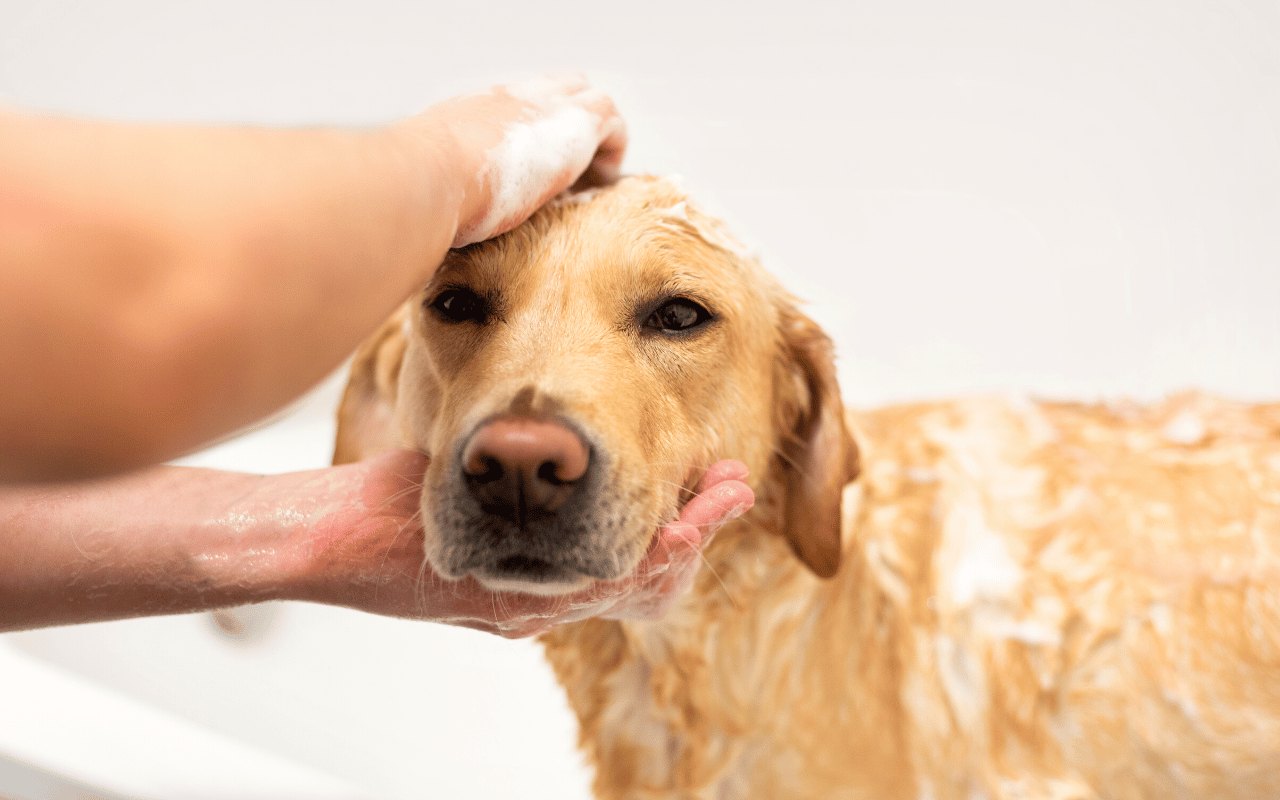Safeguarding Your Labrador’s Well-being: The Essential Guide to Labrador Retriever Health Screenings
Are you the proud owner of a Labrador Retriever or considering bringing one into your family? If so, you’re in for a treat! Known for their friendly demeanor, loyalty, and intelligence, Labrador Retrievers are one of the most beloved dog breeds worldwide. However, like any other breed, they are not immune to certain health conditions. That’s where Labrador Retriever health screenings come into play, ensuring the well-being of these furry companions.
In this blog post, we’ll delve into the importance of Labrador Retriever health screenings and the key aspects you need to be aware of as a responsible pet owner. Whether you’re a first-time Labrador owner or have had these magnificent creatures in your life for years, understanding health screenings can play a crucial role in maintaining their vitality and happiness.
So keep reading to learn more!
Importance of Health Screenings
Health screenings play a crucial role in maintaining the well-being of Labradors, as they help identify potential health issues and allow for early intervention and treatment. Labradors are susceptible to certain genetic and breed-specific health conditions, and regular screenings can help detect these conditions before they become more serious or irreversible.

Here are some key reasons why health screenings are important for Labradors:
🟦 Early Detection of Genetic Conditions
Labradors are prone to various genetic conditions, such as hip dysplasia, elbow dysplasia, progressive retinal atrophy (PRA), exercise-induced collapse (EIC), and various types of inherited heart diseases. Regular health screenings, including X-rays, genetic testing, and eye examinations, can identify these conditions early on, enabling prompt management and treatment.
🟦 Preventive Measures
Health screenings allow for preventive measures to be taken to minimize the impact of potential health issues. For instance, if a Labrador is found to be at risk for hip dysplasia or elbow dysplasia, the owner can implement strategies to promote joint health, such as maintaining a healthy weight, providing appropriate exercise, and avoiding excessive jumping or strenuous activities.
🟦 Breeding Considerations
If you plan to breed your Labrador, health screenings are essential. Responsible breeders conduct thorough health screenings to ensure that their breeding stock is free from inheritable diseases or conditions. This helps reduce the risk of passing on these conditions to future generations and contributes to the overall health and quality of the breed.
🟦 Improved Quality of Life
Regular health screenings can help maintain a Labrador’s quality of life by addressing health issues early. By detecting conditions like arthritis, allergies, or thyroid disorders, appropriate treatment plans can be implemented to manage symptoms and enhance the dog’s comfort and well-being.
🟦 Longevity and Cost Savings
Early detection and intervention through health screenings can potentially extend the lifespan of Labradors by addressing health issues promptly. Additionally, identifying and managing conditions before they worsen can help reduce overall veterinary costs associated with more advanced stages of illness or disease.
It’s important to work closely with a trusted veterinarian to determine the appropriate health screenings for your Labrador based on factors such as age, breed-specific risks, and individual health history.
Understanding Labrador Retriever Health Concerns
Labrador Retrievers, known for their playful personalities and wagging tails, are generally a robust bunch. But just like humans, they have their fair share of health concerns to watch out for. These include hip and elbow dysplasia, where their joints can act up and cause discomfort during their energetic adventures. And speaking of energy, Labs can have a hearty appetite too, making them prone to obesity if we’re not careful with portion sizes and exercise routines. So, remember to keep an eye on those treat-filled moments!
And one way to ensure your Lab’s safety, it’s recommended to do health screenings. Check out the next section to learn more!
Recommended Health Screenings for Labrador Retrievers
🟩 Hip and Elbow Dysplasia
Screening for hip and elbow dysplasia is important for Labrador owners to identify any potential issues early on and take appropriate measures to manage them. Here’s some information on health screening for hip and elbow dysplasia in Labradors:
✓ Hip Dysplasia Screening
- Radiographic Evaluation: This is the most common method used to screen for hip dysplasia in Labradors. The two main evaluation systems are the Orthopedic Foundation for Animals (OFA) and the PennHIP method.
- OFA Evaluation: To perform an OFA evaluation, X-rays of the dog’s hips are taken and submitted to the OFA for evaluation. These radiographs are reviewed by veterinary specialists who assess the hip joint conformation and assign a hip score. The hip score ranges from Excellent (indicating no signs of hip dysplasia) to Dysplastic (indicating significant dysplastic changes). It’s important to note that a dog’s hip score may not be determined until the age of two to account for skeletal maturity.
- PennHIP Evaluation: The PennHIP method involves a more comprehensive assessment of hip joint laxity. It measures the hip-extended distraction index (DI), which quantifies the amount of hip joint laxity. The DI is calculated by measuring the distance between the femoral head and the acetabulum under sedation or general anesthesia. A higher DI indicates increased hip joint laxity and a greater risk of developing hip dysplasia.
✓ Elbow Dysplasia Screening
- Radiographic Evaluation: Elbow dysplasia can also be screened through radiographic evaluation. The OFA offers an evaluation specifically for elbow dysplasia.
- OFA Evaluation: Similar to hip dysplasia evaluation, X-rays of the dog’s elbows are taken and submitted to the OFA for assessment. Veterinary specialists review the radiographs and assign an elbow grade based on the presence and severity of dysplastic changes. The grading system ranges from Normal (no signs of dysplasia) to Severe (indicating significant dysplastic changes).
It’s essential to remember that these screening methods provide an assessment of the likelihood of developing hip or elbow dysplasia but do not guarantee that a dog will or will not develop these conditions.
🟩 Progressive Retinal Atrophy (PRA)
If you are planning to breed your Labrador, it is crucial to have both parents tested for PRA. By ensuring that both parents are clear of PRA or are only carriers (and not affected), you can minimize the risk of passing on the disease to their offspring. To screen Labradors for PRA, there are a few options available:
✓ DNA Testing
This is the most accurate and reliable method for identifying genetic mutations associated with PRA. Labradors can undergo a DNA test to detect specific mutations that cause the condition. The most common genes associated with PRA in Labradors are PRCD (Progressive Rod-Cone Degeneration) and CNGB1 (Cyclic Nucleotide-Gated Channel Beta-1 Subunit).
DNA testing can be done by collecting a cheek swab or a blood sample from the dog. The sample is sent to a laboratory that specializes in genetic testing, and they will analyze the DNA to determine if the dog carries the PRA mutation.
✓ Eye Examination
Regular eye examinations by a veterinary ophthalmologist can help detect early signs of PRA. These examinations involve a thorough evaluation of the dog’s eyes using specialized equipment and techniques. The ophthalmologist will check for abnormalities in the retina and other structures of the eye that may indicate the presence of PRA.
It’s important to note that while an eye examination can identify clinical signs of PRA, it may not be able to detect the condition in its early stages or identify carriers of the disease. DNA testing is generally more accurate for identifying PRA carriers.
🟩 Exercise-Induced Collapse (EIC)
To screen Labradors for EIC, a genetic test can be conducted to determine if a dog carries the mutation associated with the condition. Here’s what you need to know about the health screening process for EIC in Labradors:
✓ Genetic Testing
The most reliable way to screen Labradors for EIC is through genetic testing. A DNA sample, typically obtained through a cheek swab or blood sample, is analyzed to check for the presence of the EIC mutation. The test identifies whether the dog is clear, a carrier, or affected by the condition.
✓ Veterinarian Consultation
It’s recommended to consult with a veterinarian who specializes in genetic testing or Labrador health to discuss the screening process and obtain the necessary test kit. They can guide you through the procedure and provide further information about EIC.
✓ Test Kit
Once you have the test kit, follow the instructions provided to collect the DNA sample from your Labrador. This usually involves swabbing the inside of the dog’s cheek with a sterile swab or drawing a blood sample from a vein.
✓ Submitting the Sample
After collecting the sample, you will need to send it back to the testing laboratory as per the provided instructions. Make sure to complete any required paperwork, provide accurate information, and pay the testing fee if applicable.
✓ Results
The laboratory will analyze the DNA sample and generate a report indicating whether your Labrador is clear, a carrier, or affected by EIC. A clear result means the dog does not carry the EIC mutation. A carrier result indicates that the dog carries one copy of the mutation but is unaffected by the condition. An affected result means the dog carries two copies of the mutation and is at risk of developing EIC.
✓ Breeding Considerations
If you are planning to breed your Labrador, it’s important to consider the EIC status of both the male and female dogs. Breeding two carriers increases the risk of producing affected puppies. Responsible breeding practices often involve selecting mates to minimize the risk of producing affected offspring.
It’s worth noting that EIC is a specific health concern in Labradors, but there may be other health screenings recommended for the breed. Consulting with a veterinarian or a breed-specific health organization can provide more comprehensive information on health testing for Labradors.
Other Genetic Disorders and the Required Health Screenings
Labradors are prone to certain genetic disorders, and it’s important to consider health screening for these conditions to ensure the well-being of your Labrador. Apart from the well-known genetic disorders like hip dysplasia and exercise-induced collapse (EIC), here are some other unique genetic disorders that can affect Labradors:
🟪 Centronuclear Myopathy (CNM)
CNM is a genetic muscle disorder that affects Labradors and causes muscle weakness and difficulty in movement. Screening for CNM can be done through genetic testing to identify carriers and avoid breeding affected dogs.
🟪 Hereditary Nasal Parakeratosis (HNPK)
HNPK is a skin disorder that affects the nose of Labradors. It causes excessive dryness, cracking, and bleeding of the nose. Genetic testing can help identify carriers and prevent the transmission of HNPK to future generations.
🟪 Dilated Cardiomyopathy (DCM)
DCM is a condition that affects the heart muscles, leading to an enlarged and weakened heart. While DCM is not exclusive to Labradors, they are among the breeds at increased risk. Regular cardiac evaluations and screenings can help detect early signs of DCM.
When Should My Labrador Undergo Health Screening
Labradors should undergo health screenings at different stages of their lives to ensure their well-being. Here are some key milestones and recommended health screenings for Labradors:
🟨 Puppy Health Screening
When you bring home a Labrador puppy, it’s essential to schedule an initial health examination with a veterinarian. This examination typically includes a general physical assessment, vaccinations, and discussions about preventive care, nutrition, and parasite control. The vet may also recommend screening for common puppy health issues such as intestinal parasites.
🟨 Annual Wellness Exams
Once your Labrador reaches adulthood (around 1 to 2 years old), annual wellness exams are advisable. During these check-ups, your veterinarian will conduct a comprehensive physical examination, assess weight and body condition, and discuss any changes in behavior or concerns. These exams help monitor your dog’s overall health and provide an opportunity to discuss preventive care, such as vaccinations, heartworm prevention, and flea and tick control.
🟨 Breed-Specific Health Screenings
Labradors are prone to certain breed-specific health conditions. Depending on the specific risks associated with the Labrador breed, your veterinarian may recommend breed-specific screenings at different stages. These screenings often include hip and elbow evaluations, eye examinations, and genetic testing for conditions like progressive retinal atrophy (PRA) or exercise-induced collapse (EIC). The appropriate timing for these screenings can vary, so it’s important to consult with your veterinarian or a veterinary specialist familiar with Labrador health concerns.
🟨 Senior Health Screenings
As Labradors age, their healthcare needs may change. Around the age of 7 or 8, Labradors are already seniors, and more frequent health screenings are advisable. These screenings may include blood work to assess organ function, urinalysis, blood pressure measurement, and radiographs to check for signs of arthritis or other age-related conditions. Regular dental examinations and cleanings are also crucial to maintain oral health.
🟨 Pre-Breeding Health Clearances
If you plan to breed your Labrador, it’s important to conduct pre-breeding health clearances before mating. These clearances often involve specific health screenings, including hip and elbow evaluations, eye examinations, and genetic testing for inherited diseases prevalent in Labradors. Ensuring that both the male and female Labrador have undergone these health clearances helps reduce the risk of passing on genetic conditions to offspring.
Remember, the timing and frequency of health screenings may vary based on individual factors, including your dog’s overall health, breed-specific risks, and your veterinarian’s recommendations. Regular communication with your veterinarian and adhering to their guidance will help ensure your Labrador receives appropriate health screenings throughout their life.
Labrador Retriever Health Screenings Alternatives
If you are unable to access or afford traditional health screenings for your Labrador Retriever, there are alternative approaches you can consider to monitor your dog’s health. While these alternatives may not replace professional veterinary care, they can help you stay attuned to your Labrador’s well-being between vet visits. Here are some alternatives:
🟫 Regular Home Examinations
Conduct thorough physical examinations at home on a regular basis. Pay attention to any changes in your Labrador’s body, such as lumps, bumps, skin abnormalities, or changes in coat condition. Check their eyes for redness or discharge, ears for odor or inflammation, and teeth for tartar buildup or gum disease. Monitor their weight and body condition by assessing their body shape and feeling for any significant changes. Also, observe their behavior, appetite, and water intake for any unusual patterns or deviations from the norm.
🟫 Proper Nutrition and Weight Management
Feed your Labrador a high-quality, balanced diet that meets its specific nutritional needs. Consult with your veterinarian or a professional animal nutritionist to determine the appropriate type and amount of food for your dog. Monitor their weight regularly and make adjustments to their food intake and exercise routine as needed to maintain a healthy weight. Obesity can lead to various health issues, so it’s important to prevent and manage excess weight.
🟫 Regular Exercise and Mental Stimulation
Labradors are an energetic breed that requires regular exercise to stay healthy and mentally stimulated. Engage in activities that provide physical exercises, such as daily walks, playtime, swimming, or retrieving games. Mental stimulation is also crucial, so provide interactive toys, puzzles, and training sessions to keep their minds active. Regular exercise helps maintain cardiovascular health, muscle tone, and joint mobility.
🟫 Dental Care
Dental health is often overlooked but crucial for Labradors. Establish a dental care routine that includes regular tooth brushing with a dog-specific toothbrush and toothpaste. Aim for daily brushing, or at least a few times a week, to prevent plaque and tartar buildup. Incorporate dental chews or treats that promote oral hygiene. Periodically schedule professional dental cleanings as recommended by your veterinarian to address any advanced dental issues and maintain healthy gums and teeth.
🟫 Parasite Prevention
Protect your Labrador from external and internal parasites by following a regular prevention regimen. Consult with your veterinarian to determine the most effective and suitable preventive measures based on your geographical location and lifestyle. This may include using topical or oral medications for fleas, ticks, and heartworms, using collars, or implementing other preventative methods. Regularly check for ticks or fleas during grooming sessions and promptly remove any parasites you find.
🟫 Behavior and Energy Level Observation
Pay close attention to your Labrador’s behavior and energy levels. Notice any changes in their temperament, appetite, water intake, bathroom habits, or overall activity levels. Sudden changes in behavior, such as increased aggression, excessive lethargy, or withdrawal, could indicate underlying health issues. Promptly consult with your veterinarian if you observe any significant deviations from your Labrador’s normal behavior or energy levels.
Overcoming the Results of Labrador Retriever Health Screenings
When faced with the results of Labrador Retriever health screenings, it is important to consult with a veterinarian specializing in the identified condition for guidance and treatment recommendations. Following the veterinarian’s advice and treatment plan is crucial for managing the condition and improving your Labrador’s well-being. Lifestyle adjustments, such as exercise modifications or dietary changes, may be necessary, and regular veterinary follow-ups will help monitor progress and make any needed adjustments to the treatment plan.
Lastly, providing emotional support and seeking specialized care when necessary are also key steps in overcoming the results of Labrador Retriever health screenings and ensuring the best possible outcomes for your beloved pet.
Final Words
In conclusion, prioritizing health screenings for your Labrador Retriever is essential for their overall well-being. These screenings help detect potential health issues early on, allowing for prompt intervention and treatment. From genetic conditions to breed-specific concerns, health screenings can provide valuable insights into your Labrador’s health and enable you to make informed decisions regarding their care.
By working closely with your veterinarian, you can determine the appropriate screenings for your Labrador at different stages of their life. Whether it’s hip and elbow evaluations, eye examinations, or genetic testing, these screenings help identify any underlying conditions and guide you in providing the necessary care.
Lastly, by staying proactive and addressing health concerns promptly, you can help ensure that your furry friend enjoys a happy and healthy life by your side!







